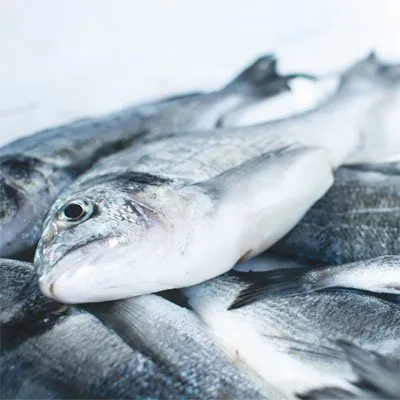They are widely used in industry, but experts have long been warning about the risks PFAS pose to health and the environment. Traces of PFAS have now also been found in fish from various Swiss waters.
Various foods, coated disposable paper cups or rainproof outdoor jackets: different products that have one thing in common: they all contain per- and polyfluorinated alkyl substances, or PFAS for short. They include a group of more than 10’000 substances, some of which are toxic. The controversial water-, grease- and dirt-repellent substances are used as standard in the industrial manufacturing process.
The European Environment Agency warns of sometimes serious health damage caused by PFAS. Switzerland responded to this and took appropriate measures to minimize the absorption of the chemicals. New maximum levels for PFAS in food will apply from 2024. The PFAS limits for drinking water are being examined and are expected to be adjusted from 2026. – A control of 17 fish species shows that these steps are urgently needed. They were tested for PFAS in various Swiss lakes, rivers and breeding facilities. The chemicals were detected in several samples – in some fish the contamination was above the EU maximum value.
Particularly alarming: PFAS residues were also found in fish stocks from Lake Constance – the most important drinking water reservoir in Europe.
PFAS – chemicals used in a variety of ways with risky effects
PFAS can be found in food packaging, cookware, fireproof materials and textiles. They are a key component of firefighting foam and are used in the electronics industry for the production of semiconductors. They are considered so-called “forever chemicals”: PFAS break down very slowly and remain in the body and in the environment for a long time.
The most thoroughly researched substances are PFOS and PFOA. They played an indispensable role in the industry for decades. Due to their proven health-damaging effects, the use of both compounds is now largely restricted or banned. However, they can still be detected in the environment, in the food chain and in the human organism. This is due to their resistance to natural degradation processes.
PFAS – these products are particularly affected
PFAS can be found in food and various consumer goods, especially in certain product categories.
- High-fat foods: PFAS are lipophilic, meaning they accumulate easily in fatty tissue. Therefore, they are more commonly detected in fatty foods such as meat, dairy products and fatty fish such as salmon and tuna.
- Food packaging: PFAS are used in the production of food packaging, such as coated paper cups and trays. This can result in small amounts of these chemicals being transferred to the foods they contain.
- Drinking water: In some regions, drinking water may contain PFAS, which can enter the water supply from sediment and wastewater. The results of the fish control suggest that there tends to be higher levels of PFAs in areas heavily populated by humans.
Health risks of products contaminated with PFAS
The Federal Office of Public Health (BAG) examined the blood of 789 adults from the cantons of Bern and Vaud for a pilot study. The result: At least three PFAS substances were detected in all people.
The health consequences of PFAS exposure are not acute problems, but rather long-term, chronic effects.
– Long-term exposure: Because PFAS break down slowly, repeated exposures over time can lead to accumulation in the body.
– Health consequences: There is evidence that high levels of PFAS may be linked to liver disease, thyroid disorders, immune disorders and even cancer. In children, a connection was also observed between PFAS levels in the blood and a reduced antibody response after vaccinations.
– Environmental impacts: PFAS can also impact the environment by leaching into waterways and soils, threatening the ecological health of habitats and aquatic life.
Given the environmental and health risks, it is essential to monitor PFAS in food to minimize exposure. Strict food safety requirements apply in Switzerland. However, the PFAS contamination in Swiss fish makes it clear that stricter measures and controls are essential.
PFAS testing in the food industry
PFAS chemicals sometimes occur in very low concentrations. Specialized analysis methods are required to detect them. Experienced laboratories like Biolytix work with established partners so that even the smallest traces of PFAS can be detected.
Analytical methods: Testing for PFAS in foods is carried out using complex analytical methods, including liquid chromatography (LC) and mass spectrometry (MS). These methods allow PFAS to be accurately quantified in samples.
Sampling and Preparation: Sampling is a crucial step. Food samples must be collected and prepared precisely to ensure test results are reliable. Specialized laboratories can offer valuable support with their experience and expertise.
Food Manufacturers and Compliance: PFAS testing is essential for food manufacturers to ensure products comply with applicable regulations and standards. Specialized laboratories play a key role in ensuring compliance. They ensure that the products can be offered to consumers without any health risks. In addition, the test results serve as a basis for manufacturers to make decisions and for the traceability of products.
PFAS in food: measures urgently needed
The article highlights the far-reaching impacts of PFAS chemicals in food and products. PFAS are present in various everyday items and especially in high-fat foods, food packaging and drinking water. The slow degradation time and proven health risks make PFAS a serious threat.
The recently discovered traces of PFAS in Swiss fish from various bodies of water, including Lake Constance, highlight the need for further measures. Although there are already strict food safety regulations in Switzerland, the results show that stricter controls and requirements are necessary.
The food industry must rely on specialized laboratories and analytical techniques such as liquid chromatography and mass spectrometry to detect PFAS and ensure their products meet quality standards. It is critical to monitor all PFAS to both protect consumer health and minimize environmental impacts.
Until PFAS are banned across Europe, the responsibility lies with manufacturers to research alternatives in order to largely reduce the use of PFAS. Collaboration between regulators, industry and experts is key to reducing the threat of PFAS in food and protecting public health.




